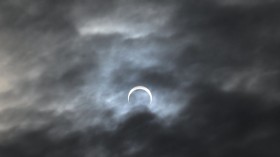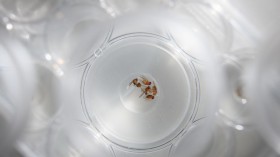Hawaii's coral reefs are already facing coral bleaching from increasing water temperatures this year, and the reefs are likely to continue suffering through October, which could potentially cause widespread reef death, say researchers at the National Oceanic and Atmospheric Administration (NOAA),
"Coral bleaching is a result of a loss of algae living within the coral's tissue that provide them with energy and give them their colors. This loss results in the pale or white 'bleached' appearance of the impacted corals. When corals bleach, they lose a supply of energy and become particularly vulnerable to additional environmental stresses," Brian Neilson, an aquatic biologist with the Department of Land and Natural Resources (DLNR) Division of Aquatic Resources (DAR), explained in the release.
According to a news release, corals spreading from the Kure Atoll, which is the northernmost part of the Hawaiian Archipelago, to the Hawaii Island become more sensitive to water temperatures that rise as little as one or two degrees. Scientists attribute the current temperature changes to an expected El Nino event.
"The bleaching that started in June 2014 has been really bad for corals in the western Pacific," Mark Eakin, a NOAA Coral Reef Watch coordinator, said in a statement. "We are worried that bleaching will spread to the western Atlantic and again into Hawaii."
The NOAA explains that coral and algae depend on each other to survive. However, as warmer waters begin to stress the corals, the algae leaves. Then, when corals are exposed they are bleached and more vulnerable.
"Being extra careful to not damage corals, preventing pollution inputs, and using pono fishing practices can help corals to recover from this bleaching event," Suzanne Case, Hawaii Department of Land and Natural Resources Chair, explained in the release. "If we fail to protect them and lose them, it could have tremendously negative impacts not only on the overall ocean ecosystem but on Hawaii's economy."
NOAA's recent prediction of future coral bleaching was published in the journal Science.
© 2024 NatureWorldNews.com All rights reserved. Do not reproduce without permission.





